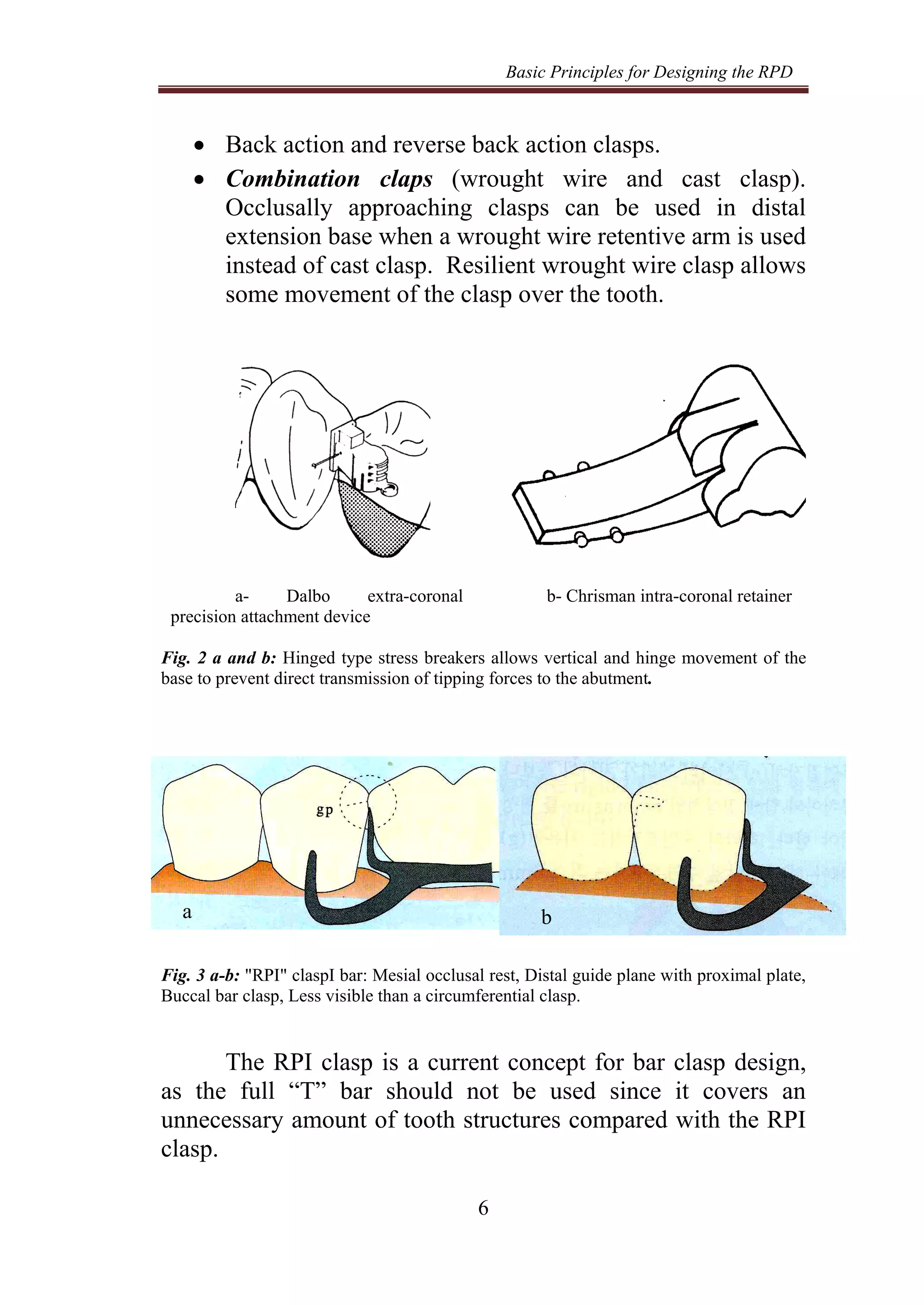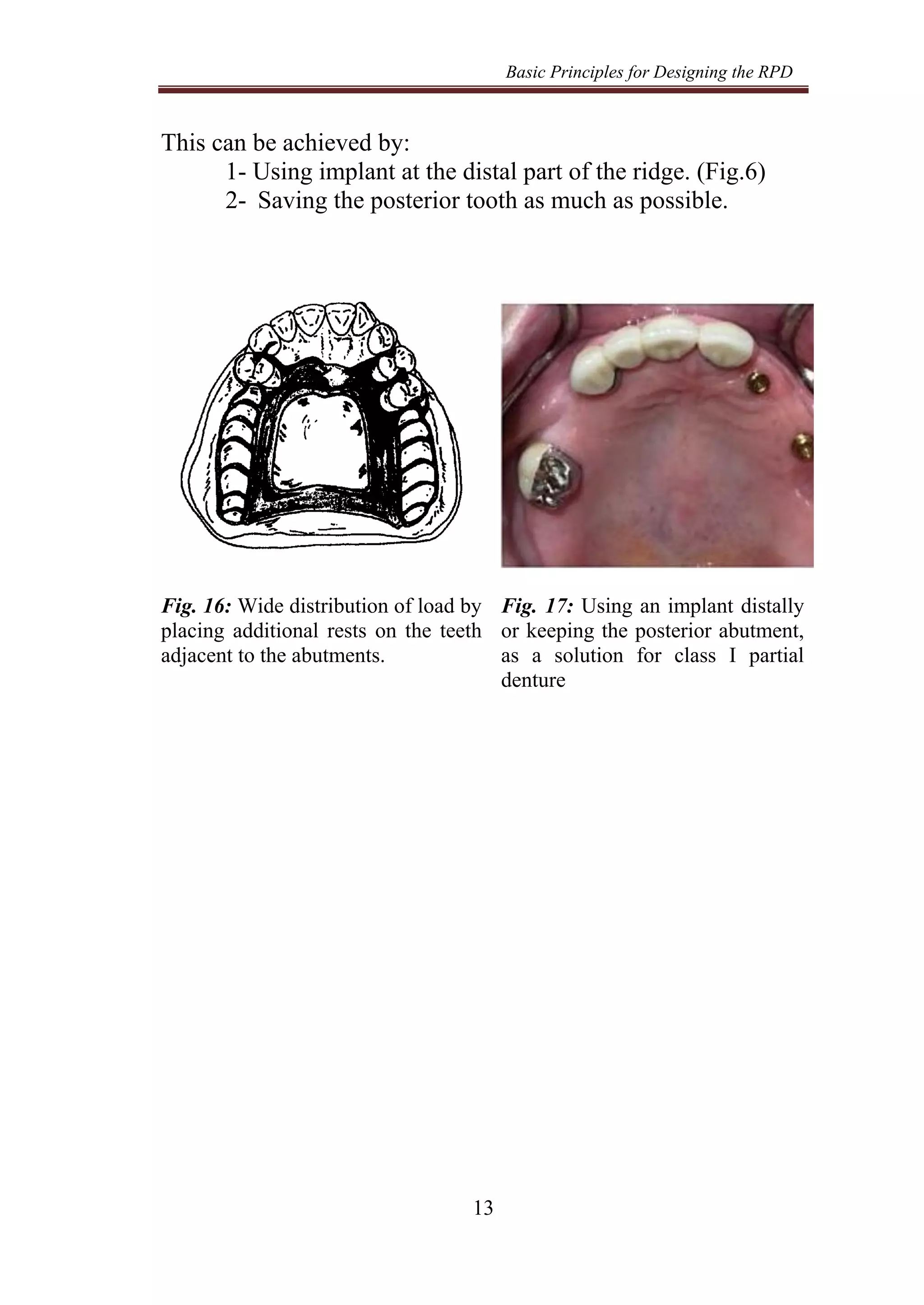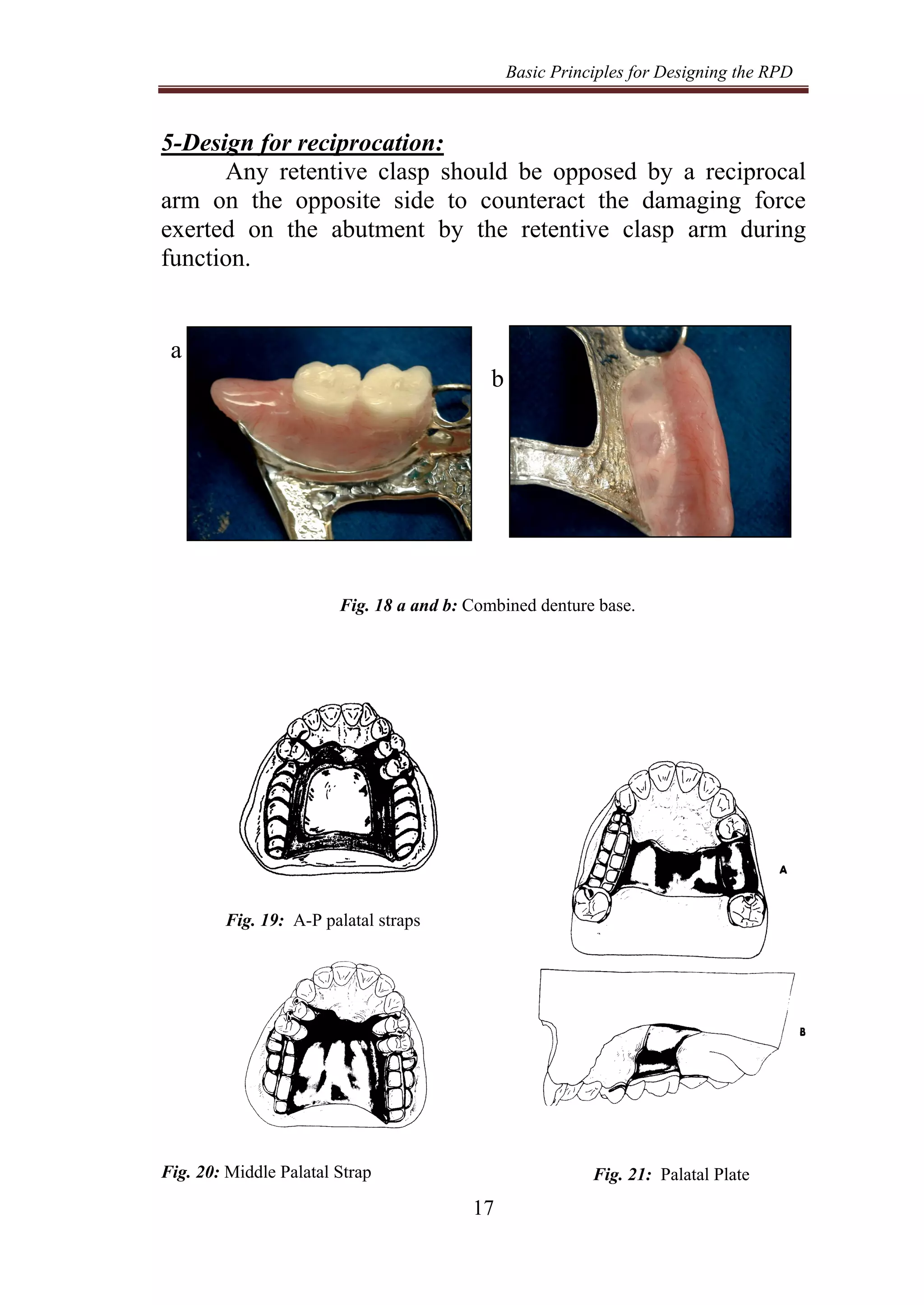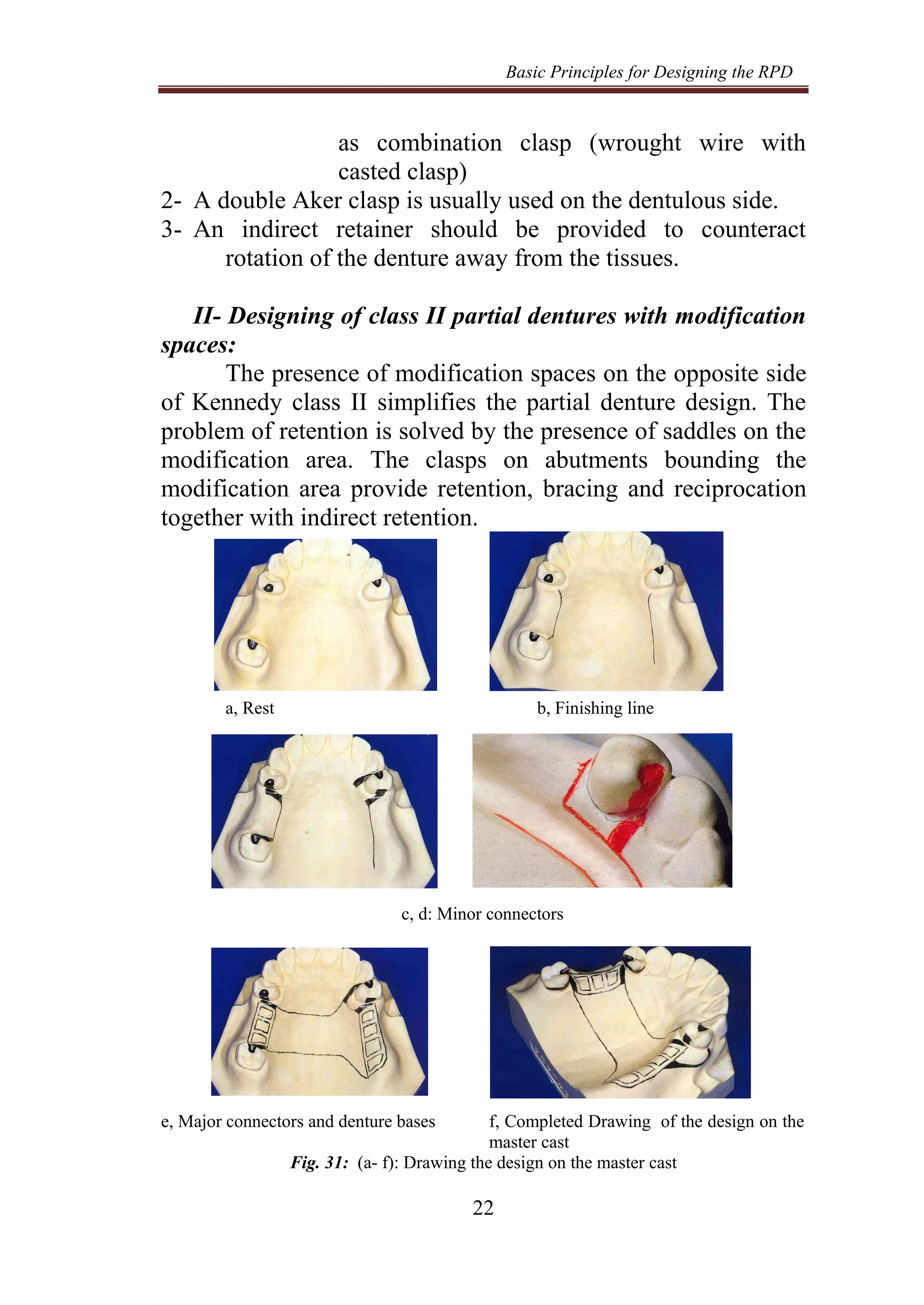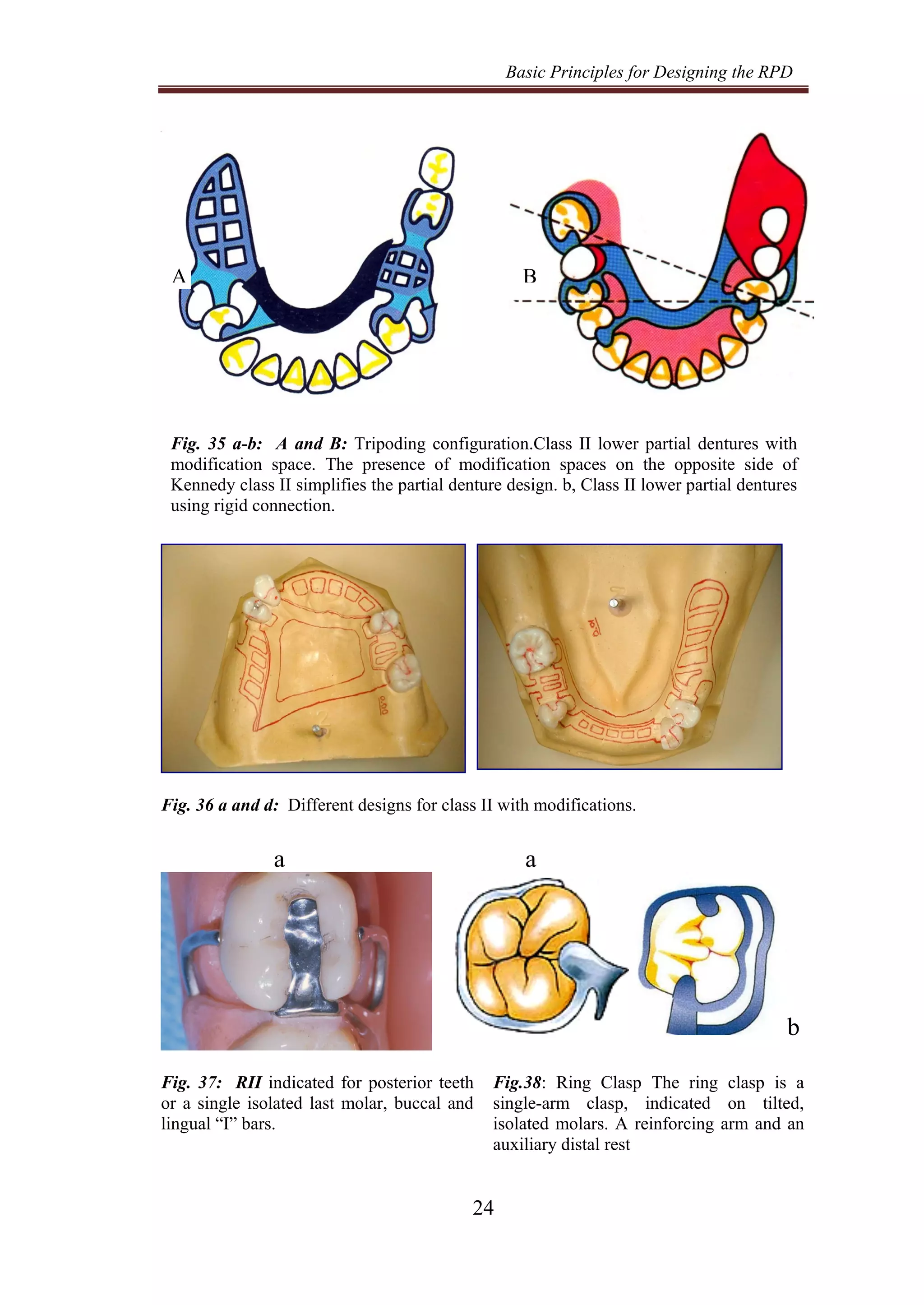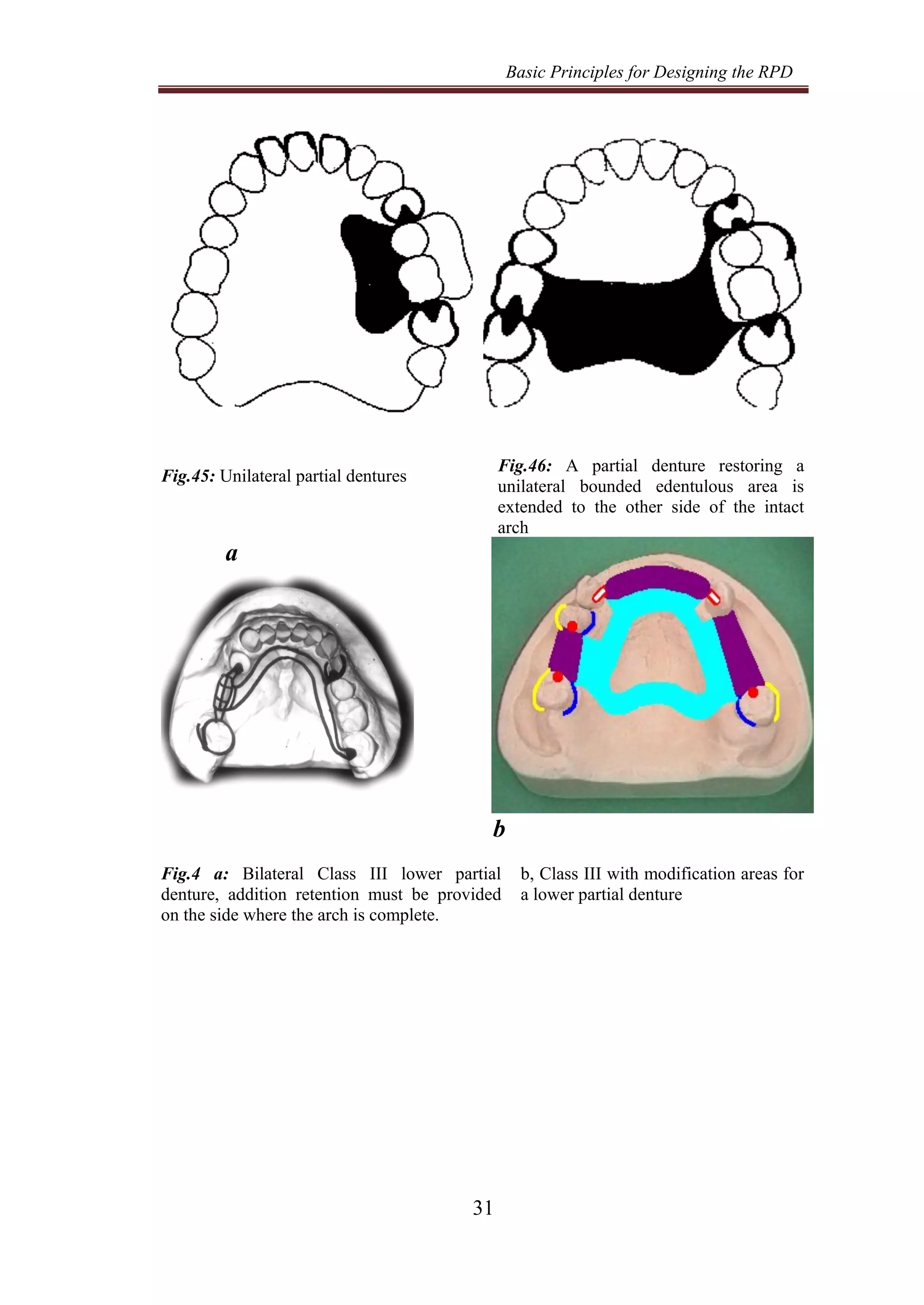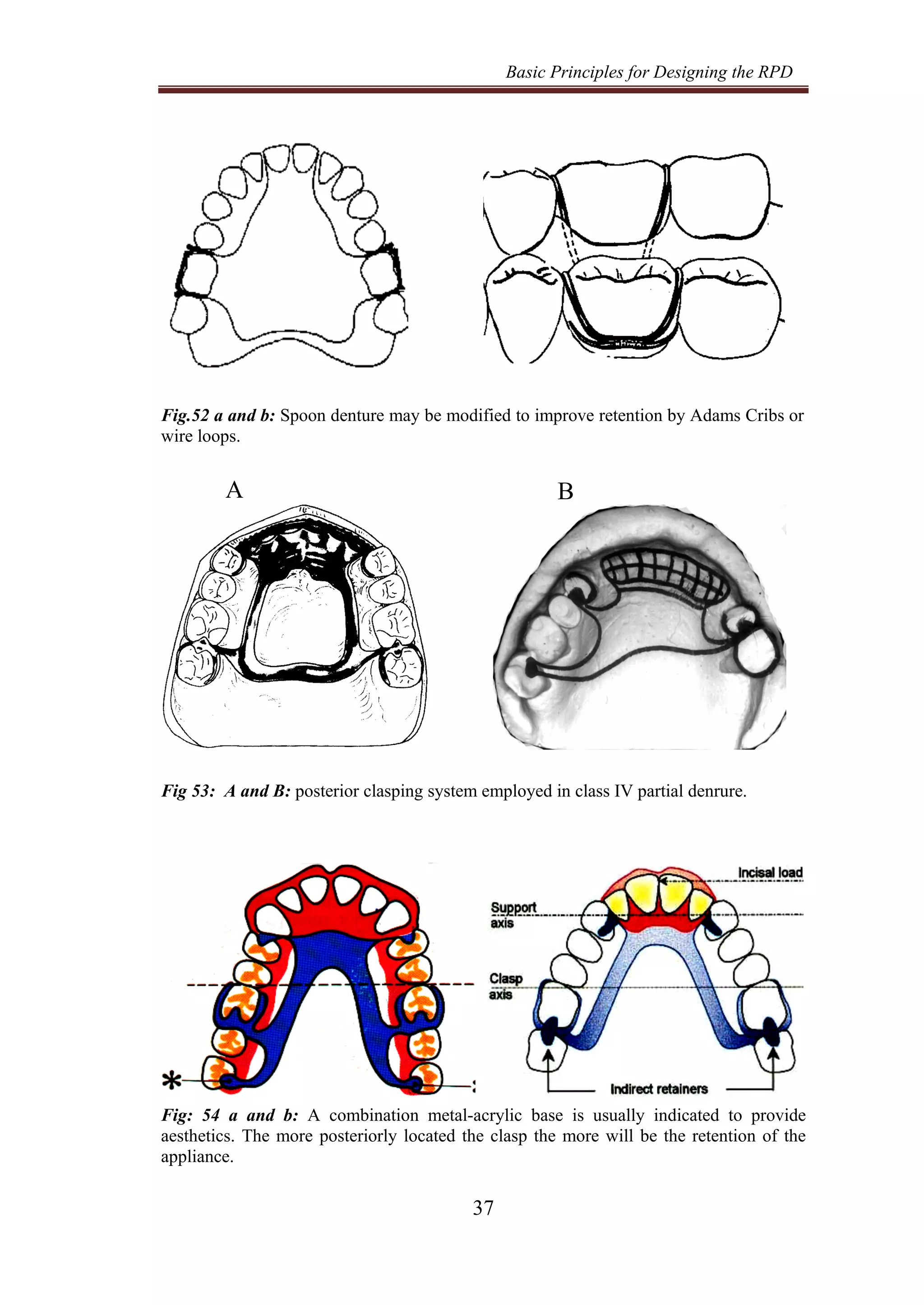This document discusses basic principles for designing removable partial dentures (RPDs). It states that RPDs should distribute forces properly by directing them vertically, decreasing their magnitude within tissue tolerance, and distributing them widely. A properly designed RPD achieves support, retention, bracing, stabilization, and reciprocation. It also discusses types of RPDs and their potential movements. Specific challenges of Kennedy class I RPDs involving free saddles are described, along with principles and techniques to address them, such as stress breaking designs, anterior placement of occlusal rests, and muco-compression impressions.





